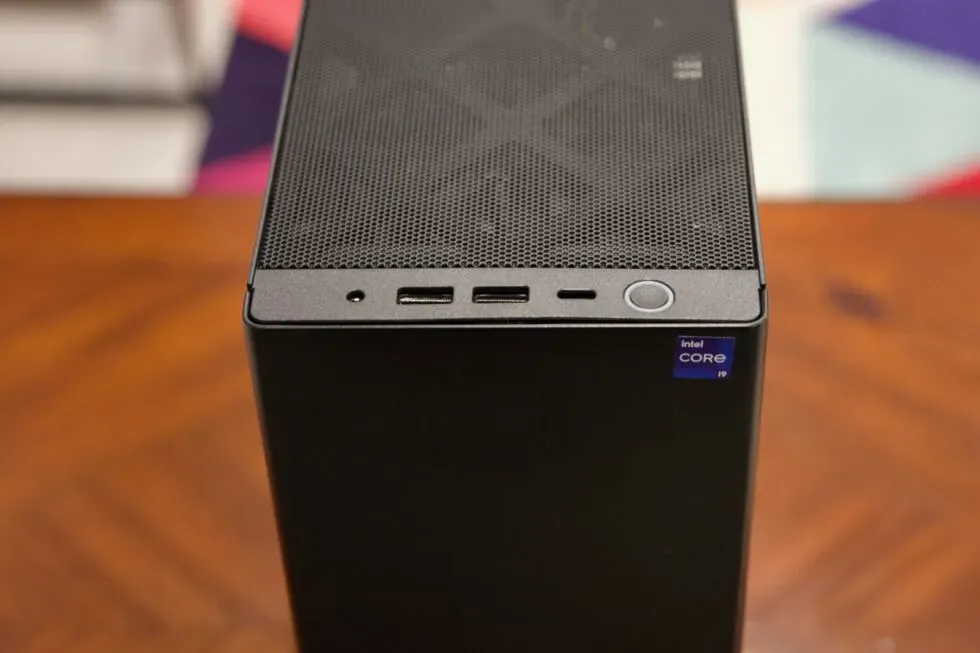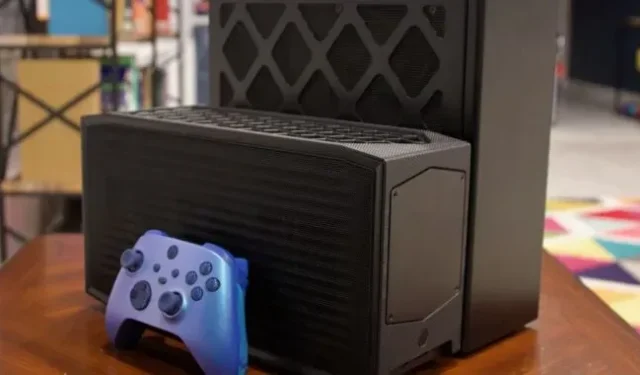Intel’s NUC (Next Unit of Computing) desktop computers gained notoriety about a decade ago due to their small size; they were essentially laptops without screens or batteries, crammed into a tiny box.
But since then, Intel has been flirting with larger NUCs. They’ve always been relatively small, but as they’ve gone from dedicated laptop GPUs to regular dedicated GPUs to even larger dedicated GPUs, NUC Extreme PCs have grown steadily to the point where they now encroach on desktops. handmade. around mini-ITX motherboards, small SFX power supplies, and other size-aware components.
Enter “Raptor Canyon”, the latest and largest in Intel’s desktop PC lineup. It replaces the “Dragon Canyon”NUC design and improves upon it by making room for longer three-slot GPUs – up to 12 inches (or just over 300mm) in length. That’s not enough room for one of Nvidia’s massive RTX 4090 and 4080 cards, but you can fit anything else in it.
The Raptor Canyon might appeal to people who want a powerful gaming desktop without the painstaking work, research, and trial and error that goes into building a computer in a tiny chassis. This is a desktop computer that won’t make sense to everyone, and there are some compromises you’ll still make if you buy one. But the ability to install more powerful GPUs means it will make a little more sense than the average Dragon Canyon box.
Max Space
The Raptor Canyon NUC Extreme box is only twice the size of the old NUC Extreme – it looks like two old Dragon Canyon boxes stacked on top of each other. And Intel uses many of the same tricks to save space.
The heart of the NUC Extreme is the “Compute Element”, a proprietary motherboard with an LGA 1700 processor socket, as well as room for two laptop-sized DDR5 SODIMM memory modules and three PCIe 4.0 M.2 slots for internal SSDs. This Compute Element plugs into the top of a separate proprietary board which also has a PCIe 5.0 slot at the bottom for attaching a dedicated GPU (the old NUC Extreme also used an intermediate board like this but with the GPU slot next to the Compute Element slot, not on opposite side of the board).
Intel makes some discounts on standard parts; The 750W PSU looks like a standard SFX model that can be swapped out, as do the 120mm case fans that blow hot air out the left side of the system. The side, top and bottom panels are mostly mesh for better air circulation. Our test unit came pre-installed with three 8-pin PCIe power connectors and a 300W 12VHPWR connector. It’s not enough for an RTX 4080 or 4090, not that one will physically fit inside the case.

The Compute Element also has most of the computer’s ports, in addition to the outputs on whatever GPU you’re using: one 2.5 Gigabit Ethernet port, one 10 Gigabit Ethernet port, two Thunderbolt 4 ports, audio jacks, an HDMI port (for built-in GPU output), and also six USB-A ports. Connectors on the motherboard provide a USB-C port, another pair of USB-A ports, and an audio jack at the top of the front of the PC for easy access.
The latest update from the old Dragon Canyon NUC design (for people who need even more storage space than the M.2 slots can provide): The empty drive tray on the left side of the computer can hold a pair of 2.5″SATA drives or one 3.5″SATA drive
What the Raptor Canyon gains in functionality it loses in finesse. The Dragon Canyon box has built-in LED lighting in the form of a glowing skull logo on the front (which I could take or leave) and glowing LED strips on the sides and front (which I think look nice). There are no LEDs on the Raptor Canyon other than white around the power button, and the Compute Element doesn’t seem to include the standard 3- or 4-pin RGB headers for people who want to switch regular 120mm fans on the side. for RGB versions. I like the understated look, but people who want their PCs backlit with LEDs will be disappointed.


